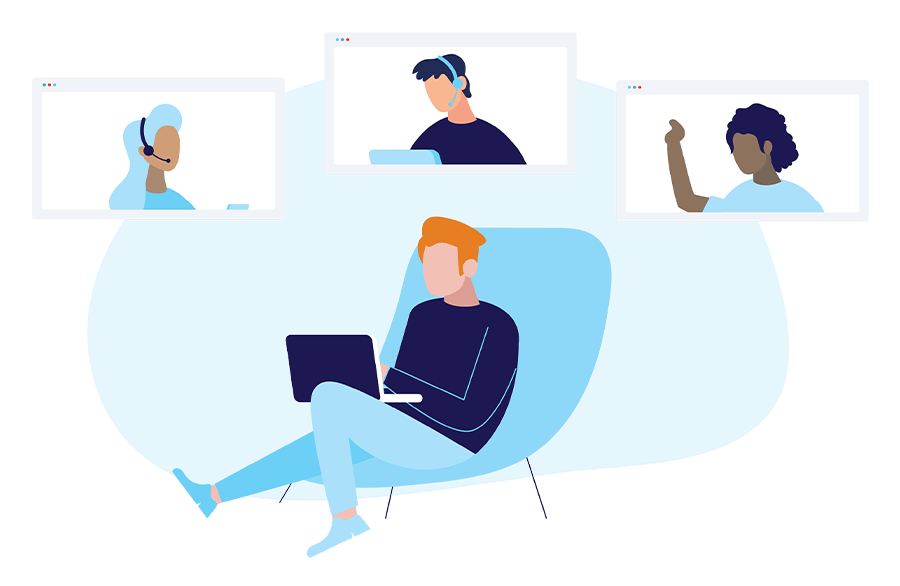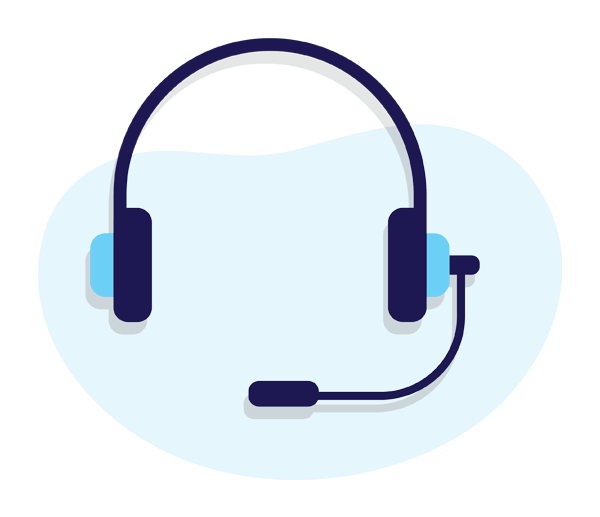As businesses transition their sales from the physical world to the rapidly widening online world, companies are doubling down on customer service. In fact, a recent survey on customer experience (CX) investment revealed that 45.9 percent of businesses are making CX a priority for the next five years.
Considering that companies who offer better CX responses can drive profit up to 8 percent higher than competitors according to SmartInsights, this quest to serve customers better is no surprise — and warranted.
But just how can businesses foster CX when consumers are more distanced than ever?

Establish an internal collaboration platform
Before you can properly accommodate any external communications, you must first iron out your internal comms processes. The larger the organization, the easier it is for miscommunication to occur.
And now, with remote working, sharing time-sensitive information can be tricky. This can be especially detrimental during a crisis or when dealing with grievances, since surveys show that a third of consumers expect their complaints to receive a response in under 30 minutes.
With an internal collaboration platform, you can centralize all important data and streamline communication lines in order to craft accurate responses quicker. Applications like Webex and Microsoft Teams allow for more efficient and flexible remote collaboration within a single interface, optimized for various mobile devices.
Both cloud-enabled systems allow your team to seamlessly exchange files and hold meetings on a secure, real-time application. Nothing falls through the cracks and all communications have the benefit of being peer-checked.
Create an omnichannel approach
To keep up with the increase in virtual demand and traffic, your company has to have an ever-present persona. You want people to be able to access and connect with you online easily, in lieu of physically visiting your storefront.
For this, you’ll want to practice an omnichannel approach that utilizes a website, text, e-mail, social media, live chat and phone. By casting a wide net, you can tap various demographics who tend to prefer some platforms and mediums over others. For example, while 67 percent of Instagram users are aged 19-29, TikTok users are generally below 18 years of age.
At the same time, Oberlo reports that 76 percent of customers still call customer service over the phone. That means you’ll have to identify the channels each user demographic seeks out, especially if you want to cater to different age or user groups.
An omnichannel approach is ideal for this kind of business. This approach can also be made more manageable by making use of contact center solutions. Contact centers can automate certain processes while also providing a central location to guide every interaction, so that responses and tracking are unified, despite having multiple channels.
Leverage data analytics to improve CX
Businesses who serve their customers online are in a good position to collect relevant data and glean valuable insights. For example, website analytics can identify not just the number of page visits in a day, but also the friction points their customers experience on the site. Do they put products in their cart only to abandon them later? There are many reasons people abandon carts, one of which is that the checkout process is too complicated, resulting in poor CX and lost sales.
Data, then, can be valuable for the business, especially if you know what information you actually need. Various data analytics resources can help you identify the right data to collect, measure and evaluate. For example, digital marketers can optimize your social media management and keep your audience engaged, while management analysts can analyze the interactions between the company and its customers. Are they positive or negative? How come?
These bits and pieces of information are important in creating a full picture of how customers perceive your business. In order to create a better experience for your customers overall, employ data analysts to cover tasks like evaluating customer feedback so you can act on them, optimizing your site for different platforms, and building a frictionless experience when making purchases from your business.

Find a balance between automation and human touch
Of course, you also need to make use of the right tools to empower your team to perform well. The tools you want in your CX kit include customer analytics, feedback monitoring, Customer Relationship Management (CRM) and social listening tools. While it’s wise to empower your customer service team with these, you can also automate a lot of the features on these tools should you prefer a leaner team or if you’re just expanding your online scope.
Don’t forget that your overall toolset should be a balance between artificial intelligence and manual data sourcing. After all, recent data on customer behavior shows that their preference for humans or chatbots is largely dependent on the situation, so it’s best to offer both. For instance, anxious customers with complicated issues are likely to want a human agent, whereas other customers simply looking for quick answers will be accustomed to a well-programmed bot.
Based on Microsoft’s Global State of Customer Service, 90 percent of Americans now use customer service as a factor when considering if they will do business with a company. To amplify your reach and secure the sustainability of your company, these actionable CX tips shouldn’t be overlooked.




